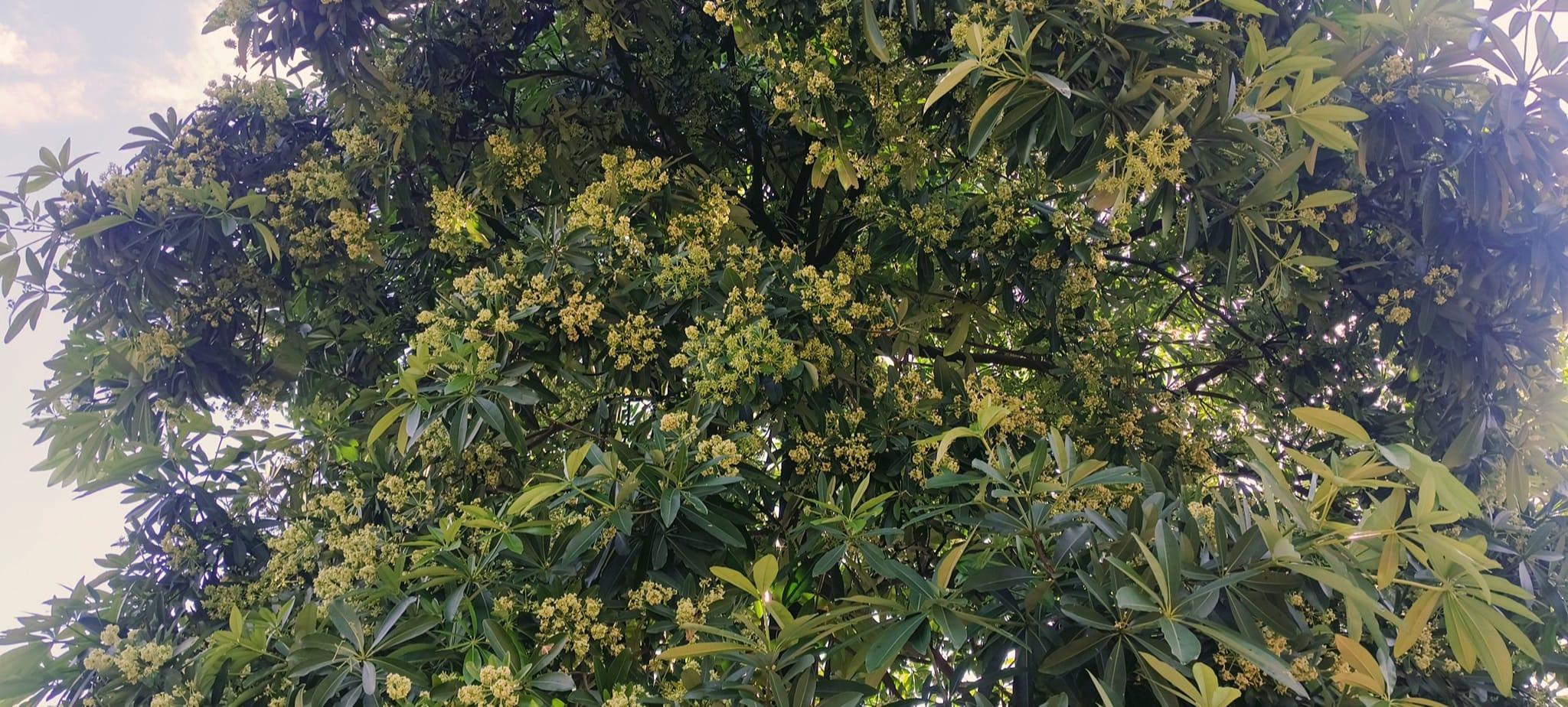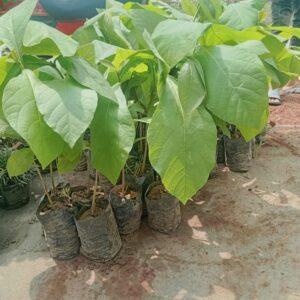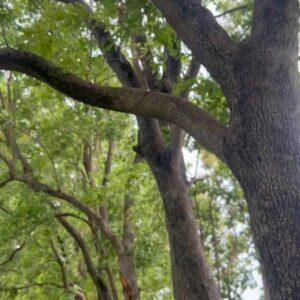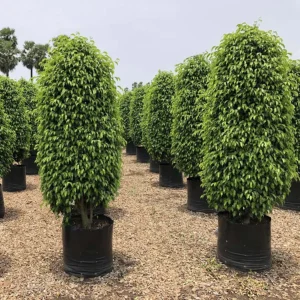Alstonia – The Fragrant Evergreen of Tropical Landscapes
Alstonia, commonly known as the Devil Tree or Blackboard Tree, is a fast-growing, evergreen tropical tree native to South and Southeast Asia. Scientifically referred to as *Alstonia scholaris*, this tree is admired for its tall, symmetrical form, whorled leaves, and clusters of small, intensely fragrant greenish-white flowers. It is widely used in landscaping, traditional medicine, and urban greening projects due to its resilience, shade-giving canopy, and low maintenance needs.
Whether planted as a roadside tree, in parks, or as a focal point in large gardens, Alstonia offers both aesthetic and ecological value.
Light Requirements
Alstonia thrives in full sun and requires ample light to maintain its upright growth and dense foliage. For best results:
– Plant in an area that receives six to eight hours of direct sunlight daily
– Avoid shaded spots, as insufficient light can lead to sparse foliage and reduced flowering
– In urban settings, it performs well in open courtyards, avenues, and large lawns
Its sun-loving nature makes it ideal for tropical and subtropical climates where sunlight is abundant year-round.
Temperature and Climate
Alstonia is well-suited to warm, humid environments and is hardy in USDA zones 9b to 11. It performs best in temperatures ranging from 12 to 32 degrees Celsius (54 to 90 degrees Fahrenheit). While it can tolerate brief periods of cooler weather, it is not frost-hardy and should be protected from prolonged exposure to temperatures below 10 degrees Celsius.
This tree is highly adaptable to tropical and subtropical climates and is commonly found in India, Pakistan, Sri Lanka, Indonesia, and parts of Australia.
Watering Needs
Alstonia requires moderate but consistent watering, especially during its early growth stages. To support healthy development:
– Water deeply once or twice a week during the growing season
– Allow the top few inches of soil to dry out between waterings
– Reduce watering in winter or during the dormant phase
– Use mulch around the base to retain moisture and suppress weeds
Once established, Alstonia becomes relatively drought-tolerant, making it suitable for low-maintenance landscapes.
Soil Type and Composition
This tree prefers fertile, well-draining soil with a slightly acidic to neutral pH, ideally between 6.0 and 7.5. The ideal soil conditions include:
– Loamy or sandy loam soil enriched with organic matter
– Good drainage to prevent waterlogging and root rot
– Compost or aged manure to support flowering and foliage development
Avoid heavy clay or compacted soils. For container planting, use a mix of garden soil, coarse sand, and compost to ensure proper aeration and nutrient availability.
Flowering and Growth Habit
Alstonia is known for its symmetrical, upright growth and fragrant flowers. It can grow up to 40 meters tall in ideal conditions, with a straight trunk and whorled branches that give it a formal, architectural appearance.
– Produces small, greenish-white flowers in clusters from late autumn to early winter
– Flowers are highly fragrant and can scent the air over long distances
– Leaves are leathery, dark green, and arranged in whorls of four to seven
– The tree produces long, slender seed pods after flowering
Its elegant form and seasonal fragrance make it a standout feature in both public and private landscapes.
Maintenance and Pruning
Alstonia is a low-maintenance tree but benefits from occasional care to maintain its shape and health:
– Prune lightly in late winter or early spring to remove dead or crossing branches
– Apply a balanced fertilizer at the beginning of the growing season to encourage lush growth
– Monitor for pests such as aphids and spider mites, especially in dry conditions
Regular pruning also helps improve air circulation and reduces the risk of disease.
Landscaping and Design Uses
Alstonia is a versatile tree that fits beautifully into a variety of landscape designs. It is ideal for:
– Avenue and roadside planting due to its tall, upright form
– Large gardens and parks as a shade tree or focal point
– Urban greening projects and institutional campuses
– Traditional and medicinal gardens
Its fragrant flowers, evergreen foliage, and low water needs make it a practical and attractive choice for tropical and subtropical regions.
Conclusion
Alstonia is more than just a tree—it is a symbol of strength, fragrance, and natural elegance. With its towering presence, year-round greenery, and minimal care requirements, it is a perfect choice for anyone looking to add structure and beauty to their outdoor space. Whether used for shade, scent, or symbolism, the Alstonia tree is a timeless addition to any landscape.





Reviews
There are no reviews yet.